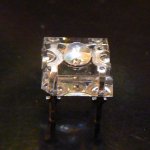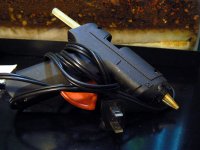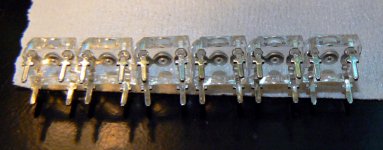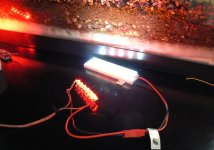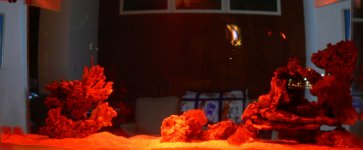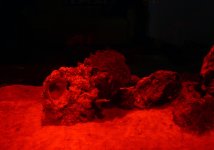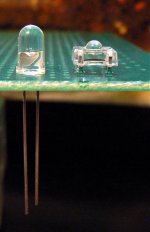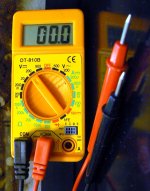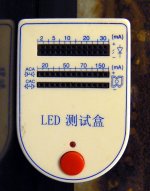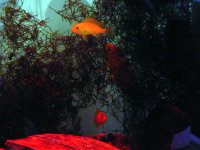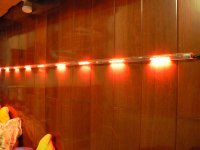- Location
- Flushing NY 11355
I have put together couple pics and simple instructions for anyone interested in making their own LED SPY Light.
As we know, most marine live cannot see in red light while we human beings can. Why not build a permanent spy light if it's not too hard to do?
First I will show you the bare minimal you can use to finished, then when time allows I will also discuss how to improve it. If more time is available I may go into more advance topic of voltage, current drivers and flashing technique
Initial Equipment:
1)Soldering iron and solder of course
2)6 red LED
3)some wires (almost any gauge goes/pick some junk equipment and pull the wires out)
4)adhesive tape (low tag masking tape is preferred)
5)12V VDC ac adapter (you can get it from Radio Shack or even one of your USB computer hard drive power supply(most come in 12VDC-you can read the label to find out). Most current AC to DC adapters now come with center positive and the outside sleeve negative. Check the diagram on the label to make sure
Some Basics:
LED are diodes and had polarity therefore power must be supplied accordingly.
LEDs of different colors and different brands and models are not born equal. It's best to get the specs where you buy them but sometimes estimates are good enough if efficiency of light is your primarily concern. Red LEDs in general run at 2-2.2V, so if you don't know what voltage of the LEDs you have at hand a 2V is safe to start with.
LED runs optimally at a certain voltage, therefore without a spec you hardly optimize the output
LED will burn out if too high a voltage is applied.
LEDs can be connected in parallel and in series but the voltage of the power supply must be adjusted to proper level.
Saltwater vapor is erosive to metal, therefore all metallic joints should be sealed with heat resistant silicon or glue.
I am using a 12VDC adapter so if I connect the LEDs in series then 2V+2V+2V+2V+2V+2V = 12V. Each LED will receive 2V and should fall within the safe limits of usage.
As we know, most marine live cannot see in red light while we human beings can. Why not build a permanent spy light if it's not too hard to do?
First I will show you the bare minimal you can use to finished, then when time allows I will also discuss how to improve it. If more time is available I may go into more advance topic of voltage, current drivers and flashing technique
Initial Equipment:
1)Soldering iron and solder of course
2)6 red LED
3)some wires (almost any gauge goes/pick some junk equipment and pull the wires out)
4)adhesive tape (low tag masking tape is preferred)
5)12V VDC ac adapter (you can get it from Radio Shack or even one of your USB computer hard drive power supply(most come in 12VDC-you can read the label to find out). Most current AC to DC adapters now come with center positive and the outside sleeve negative. Check the diagram on the label to make sure
Some Basics:
LED are diodes and had polarity therefore power must be supplied accordingly.
LEDs of different colors and different brands and models are not born equal. It's best to get the specs where you buy them but sometimes estimates are good enough if efficiency of light is your primarily concern. Red LEDs in general run at 2-2.2V, so if you don't know what voltage of the LEDs you have at hand a 2V is safe to start with.
LED runs optimally at a certain voltage, therefore without a spec you hardly optimize the output
LED will burn out if too high a voltage is applied.
LEDs can be connected in parallel and in series but the voltage of the power supply must be adjusted to proper level.
Saltwater vapor is erosive to metal, therefore all metallic joints should be sealed with heat resistant silicon or glue.
I am using a 12VDC adapter so if I connect the LEDs in series then 2V+2V+2V+2V+2V+2V = 12V. Each LED will receive 2V and should fall within the safe limits of usage.
Last edited:




